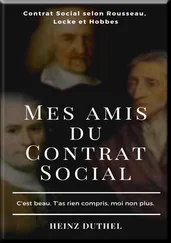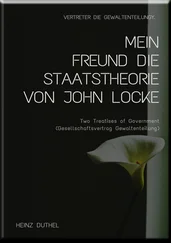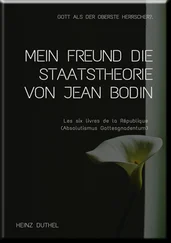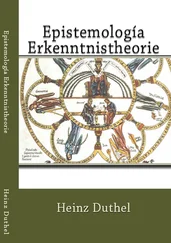Note
1.
According to Buddhist cosmology, every living being dwells in one of thirty-one distinct "planes," of which our familiar human plane is but one. Some of these realms are home to beings (the devas) with unusual powers and extraordinarily subtle and refined physical bodies — or even no body at all. Their god-like status is, however, short-lived; like all living beings, they are mortal and ultimately subject to death and rebirth in other planes according to the purity and skillfulness of their actions (kamma). One of these devas, the Great Brahma, is so clouded by his own delusion that he believes himself to be the all-powerful, all-seeing creator of the universe (see DN 11).
See also:
* "The Dhamma: Is it a Philosophy?" in Buddhism in a Nutshell, by Narada Thera
* "Is it a Religion?" in Buddhism in a Nutshell, by Narada Thera
* "Two Faces of the Dhamma," by Bhikkhu Bodhi
* "The Five Spiritual Faculties," by Bhikkhu Bodhi
* "Opening the Door to the Dhamma: Respect in Buddhist Thought & Practice," by Thanissaro Bhikkhu.
* "The Road to Nirvana is Paved with Skillful Intentions," by Thanissaro Bhikkhu.
Is Vipassana the same as Theravada?
No.
The Pali word vipassana — often translated as "insight" — has a variety of meanings. First, it refers to the flash of liberating intuitive understanding that marks the culmination of Buddhist meditation practice.1 In the Pali discourses vipassana also refers to the mind's ability to witness clearly as events unfold in the present moment. In this sense it is a skill that a meditator develops using a broad arsenal of meditative tools and techniques. With practice, this skill can bring the meditator to the threshold of liberating insight.2 In its third meaning, one that has become especially popular in the West in recent years, "Vipassana" (usually with a capital "V") refers to a system of meditation — vipassana bhavana, or "Insight Meditation" — that is based on an interpretation of the Satipatthana Sutta (MN 10), the Buddha's concise "how-to" guide to the development of mindfulness (sati).3
Followers of the popular Vipassana movement often cite the Satipatthana Sutta as the essence of the Buddha's teachings; some even claim that the instructions it contains are the only ones necessary for achieving liberating insight. Theravada Buddhism, by contrast, embraces the thousands of discourses of the Pali canon, each highlighting a different aspect of the Buddha's teachings. In Theravada each discourse supports, depends upon, reflects, and informs all the others; even a discourse as important as the Satipatthana Sutta is seen as but a single thread in the Buddha's complex tapestry of teachings.
Although many students do find all they want in Vipassana, some have a nagging sense that something fundamental is missing. This reaction is hardly surprising, as the Satipatthana discourse itself was delivered to a group of relatively advanced students who were already quite experienced and well established in the path of Dhamma practice.
Happily, all those missing pieces can be found in the Pali canon. In the Canon we find the Buddha's teachings on generosity and virtue, the twin pillars upon which all spiritual practice is built. His teachings on the recollection of the Buddha, Dhamma, and Sangha serve to strengthen the development of saddha (faith, confidence), which provides a potent fuel to sustain Dhamma practice long after we return home from that meditation retreat. In the Canon we also find his teachings on the drawbacks of sensuality and the value of renunciation; on developing all the factors in the Eightfold Path, including those that are seldom explored during organized Vipassana retreats: right speech, right livelihood, right effort, and right concentration (meaning jhana). And there is much, much more.
In Theravada, the path to liberating insight does not boil down to a single meditation technique or to being continuously mindful. The path to Awakening is full of surprising twists and turns but, thankfully, the Buddha left for us an assortment of tools to use and skills to learn to help us safely make the journey.
See also: "What is Theravada Buddhism?"
Notes
1.
Buddhist Dictionary: Manual of Buddhist Terms and Doctrines by Nyanatiloka (Kandy: Buddhist Publication Society, 1988).
2.
See "One Tool Among Many: The Place of Vipassana in Buddhist Practice" (Thanissaro Bhikkhu)
3.
The modern Vipassana movement grew out of the tradition of Satipatthana Vipassana, a meditation system based on the Satipatthana Sutta and developed by Burmese monks in the early 20th century. By the 1950's the Burmese teachers Sayagyi U Ba Khin (a layman; 1899-1971) and Mahasi Sayadaw (a monk; 1904-1982) had independently codified and institutionalized these teachings, making them widely accessible across South Asia and, eventually, the West. The Satipatthana Vipassana approach to meditation continues to enjoy widespread popularity among laypeople in the West. See Satipatthana Vipassana: Insight Through Mindfulness by Mahasi Sayadaw (Kandy: Buddhist Publication Society, 1990) and The Essentials of Buddha Dhamma in Meditative Practice by U Ba Khin (Kandy: Buddhist Publication Society, 1981).
If we're all reborn when we die, how does Buddhism explain the world's increasing population?
According to Buddhist cosmology, when a living being1 passes away he or she is reborn into one of thirty-one distinct "planes" or "realms" of existence, of which the human realm is just one. An increase in the human population simply implies that creatures from other planes are being reborn into the human realm at a rate faster than humans are dying. Likewise, a decline in the human population would imply that humans, upon death, are taking rebirth in other planes (or exiting samsara altogether) at a rate faster than other creatures are taking rebirth as humans. These sorts of population shifts have been occurring for countless eons and in themselves hold little cosmic significance.
Note
1.
Except an arahant, a fully-enlightened being. Arahants have escaped the round of rebirths once and for all and, upon death, are not reborn.
If there's no self, then who gets enlightened?
If there's no self, then what gets reborn?
If there's no self, then why...?
Nowhere in the Pali canon does Buddha categorically declare, without qualification, "There is no self."1 Any question that begins along the lines of, "If there's no self..." is thus inherently misleading, dooming the questioner to a hopeless tangle of confusion — "a thicket of [wrong] views" [MN 2]. Such questions are best put aside altogether in favor of more fruitful lines of questioning.2
Notes
1.
See "The Not-self Strategy" and "No-self or Not-self?" by Thanissaro Bhikkhu
2.
See "Questions of Skill" by Thanissaro Bhikkhu
I hear the word "sangha" used a lot these days in Buddhist circles. What does it really mean?
The Pali word "sangha" literally means "group" or "congregation," but when it is used in the suttas, the word usually refers to one of two very specific kinds of groups: either the community of Buddhist monastics (bhikkhus and bhikkhunis), or the community of people who have attained at least the first stage of Awakening. In recent decades, a new usage of the word has emerged in the West, one that seems to have no basis in classical Theravada Buddhist teachings: the usage of the word "sangha" to describe a meditation group or any sort of spiritual community.1 It sounds innocent enough, but this particular usage can — and often does — lead to profound confusion concerning one of the most fundamental underpinnings of the Buddha's teachings, the going for refuge in the Triple Gem.
The act of going for refuge in the Buddha, Dhamma, and Sangha2 marks a major turning point in one's spiritual development, the real start of the journey down the Buddhist path.3 It helps foster a healthy attitude towards Buddhist practice by encouraging the development of right view, and serves as a constant reminder both of the goal of practice and of the means to achieve that goal. It is therefore crucial to be clear and precise about the meaning of the refuges, lest we end up heading down a road quite different from the one the Buddha had in mind.
Читать дальше












